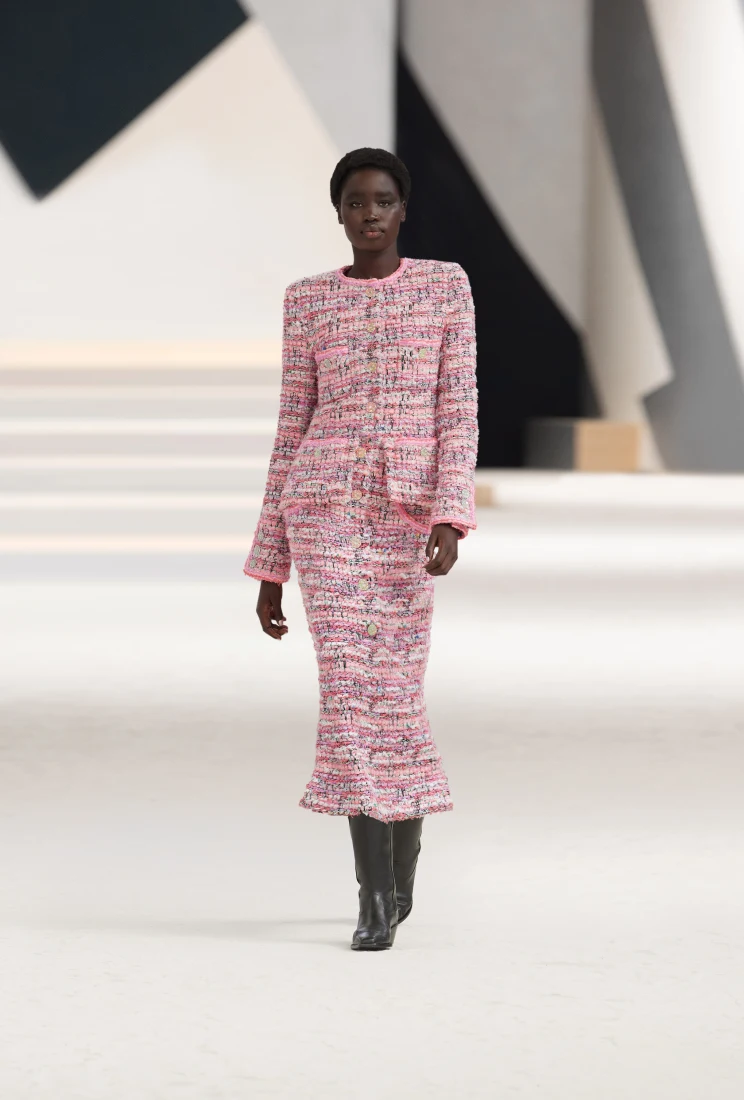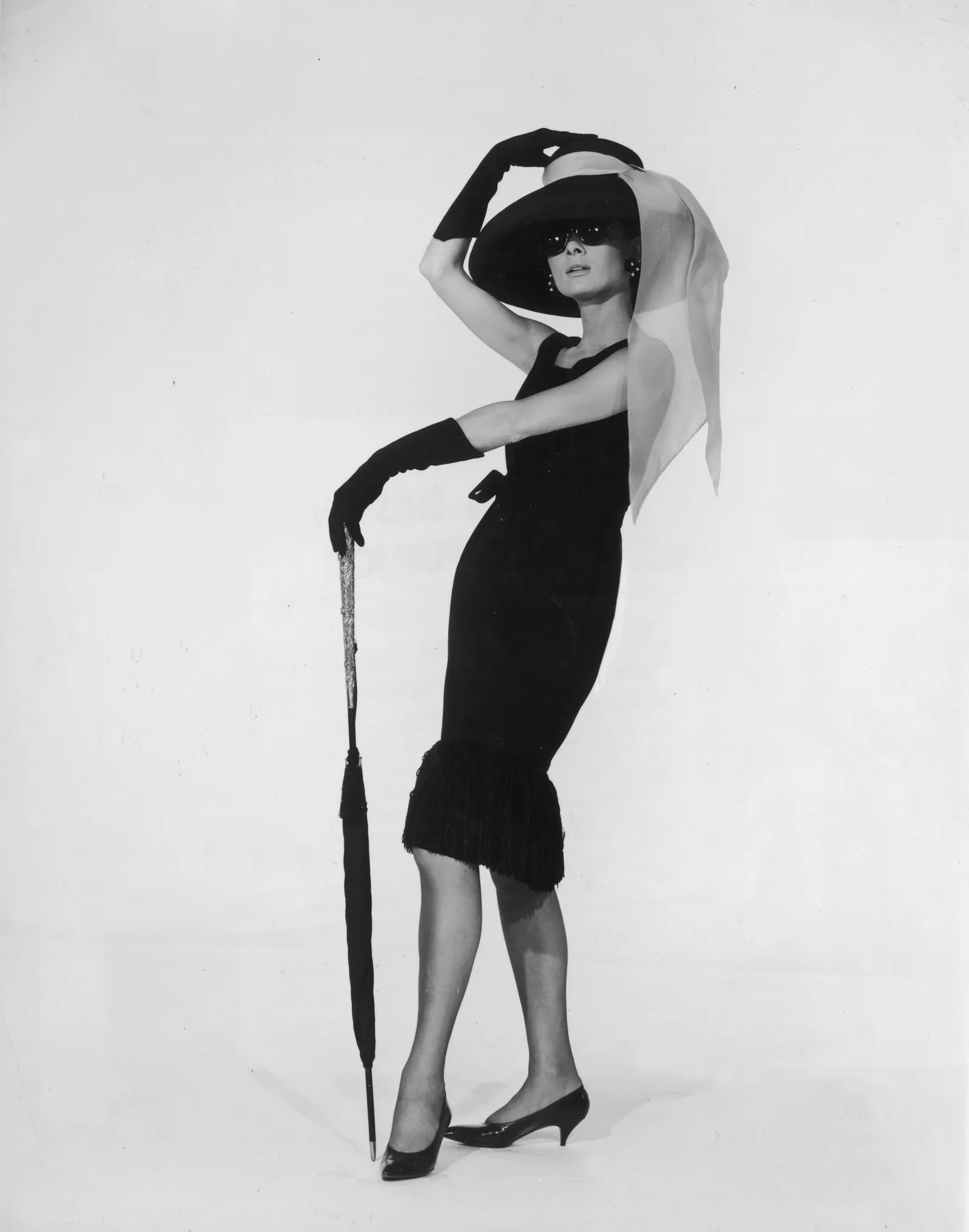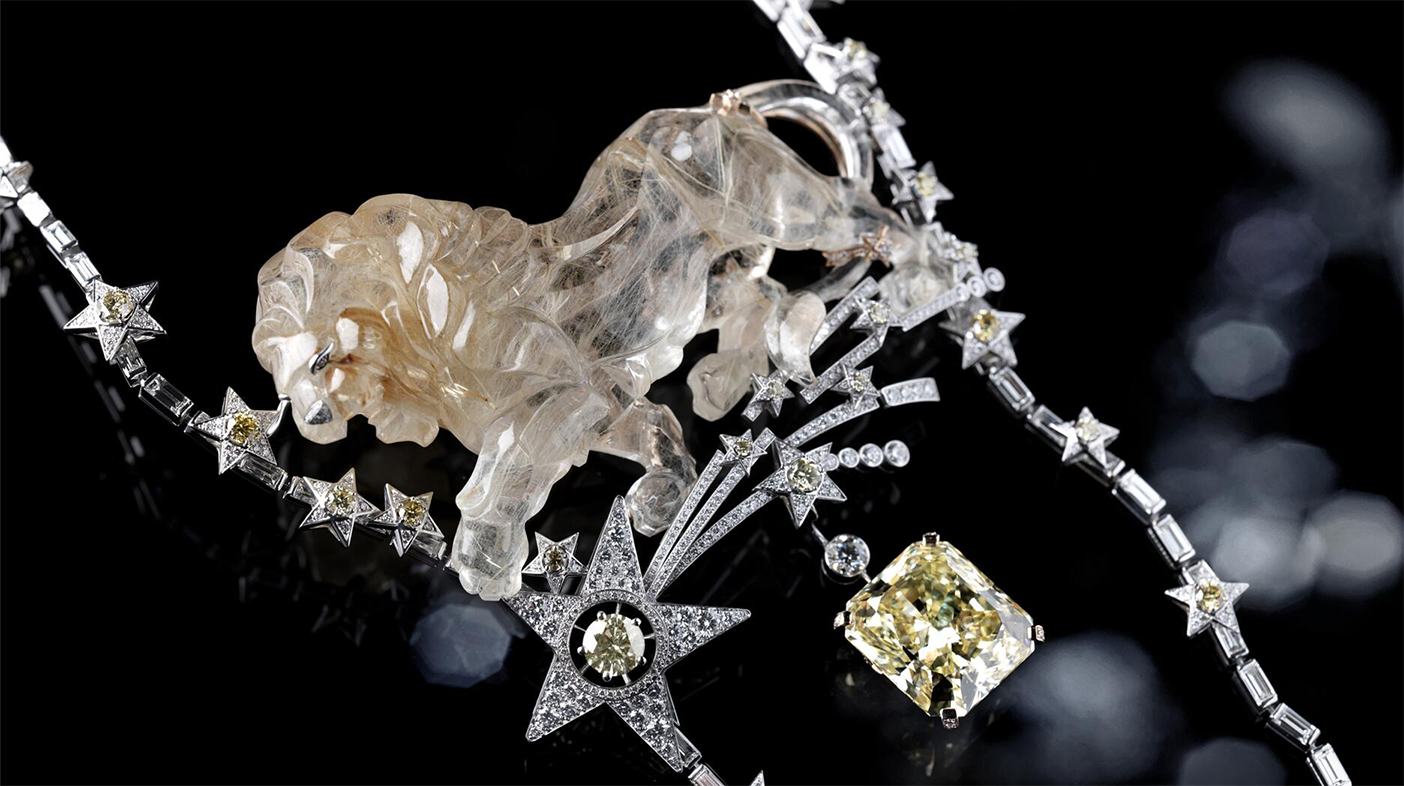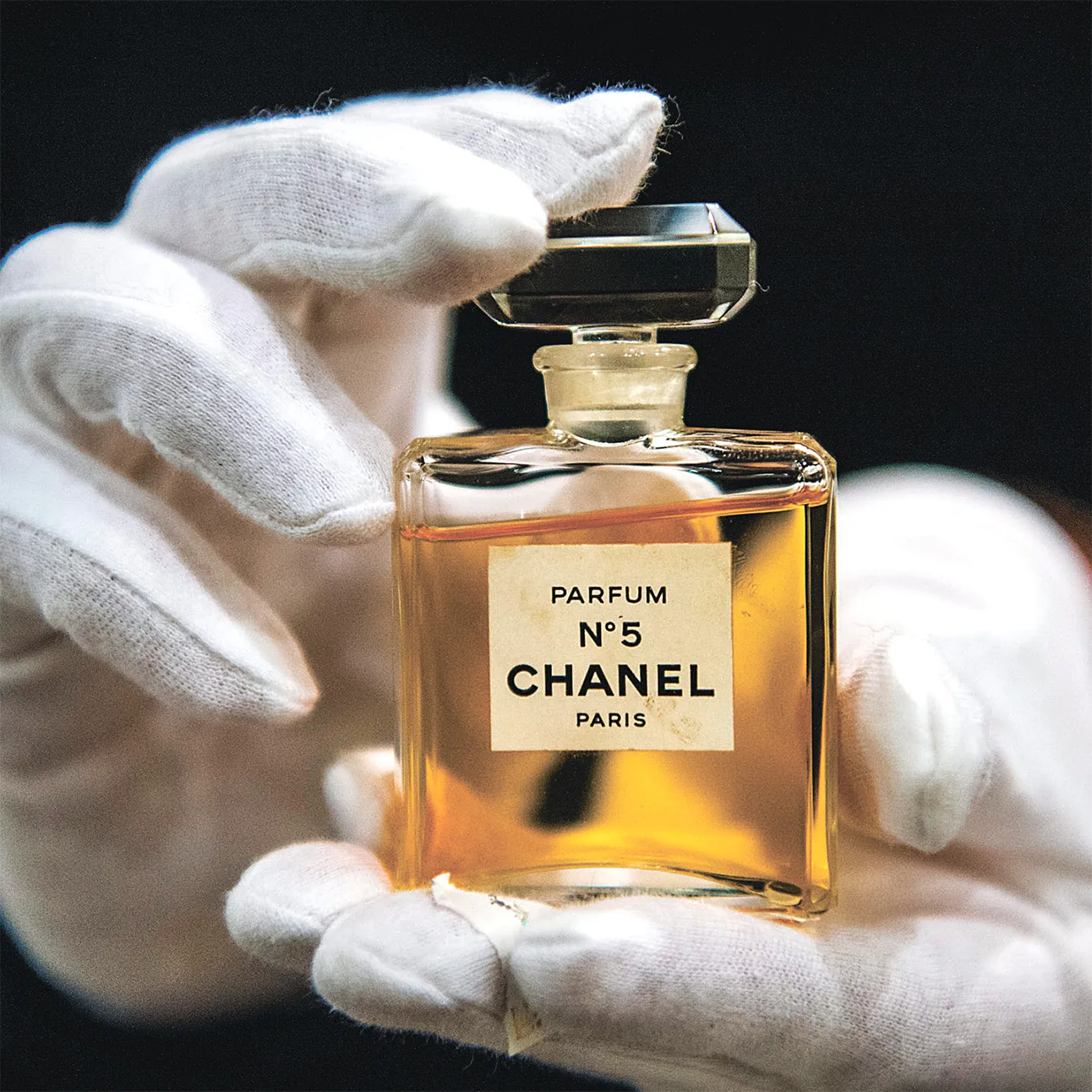 CORPORATE IDENTITY
HISTORY
COCO CHANEL
PRODUCTS
CORPORATE IDENTITY
HISTORY
COCO CHANEL
PRODUCTS
 Chanel Suit
Chanel Suit
First introduced in 1923, the Chanel tweed suit was designed for comfort and practicality. It consisted of a jacket and skirt in supple and light wool or mohair tweed, and a blouse and jacket lining in jersey or silk. Chanel did not stiffen the material or use shoulder pads, as was common in contemporary fashion. She cut the jackets on the straight grain, without adding bust darts. This allowed for quick and easy movement. She designed the neckline to leave the neck comfortably free and added functional pockets. For a higher level of comfort, the skirt had a grosgrain stay around the waist, instead of a belt. More importantly, meticulous attention was placed on detail during fittings. Measurements were taken of a customer in a standing position with arms folded at shoulder height. Chanel conducted tests with models, having them walk around, step up to a platform as if climbing stairs of an imaginary bus, and bend as if getting into a low-slung sports car. Chanel wanted to make sure women could do all of these things while wearing her suit, without accidentally exposing parts of their body they wanted covered. Each client would have repeated adjustments until their suit was comfortable enough for them to perform daily activities with comfort and ease.
 Little Black Dress
Little Black Dress
The concept of the little black dress is often cited as a Chanel contribution to the fashion lexicon, a style still worn to this day. In 1912-1913, the actress Suzanne Orlandi was one of the first women to wear a Chanel little black dress, in velvet with a white collar.[67] In 1920, Chanel herself vowed that, while observing an audience at the opera, she would dress all women in black. In 1926, the American edition of Vogue published an image of a Chanel little black dress with long sleeves, dubbing it the garçonne ('little boy' look). Vogue predicted that such a simple yet chic design would become a virtual uniform for women of taste, famously comparing its basic lines to the ubiquitous and no less widely accessible Ford automobile. The spare look generated widespread criticism from male journalists, who complained: "no more bosom, no more stomach, no more rump ... Feminine fashion of this moment in the 20th century will be baptized lop off everything." The popularity of the little black dress can be attributed in part to the timing of its introduction. The 1930s was the Great Depression era, when women needed affordable fashion. Chanel boasted that she had enabled the non-wealthy to "walk around like millionaires". Chanel started making little black dresses in wool or chenille for the day and in satin, crêpe or velvet for the evening. Chanel proclaimed "I imposed black; it's still going strong today, for black wipes out everything else around."
 Jewelry
Jewelry
Chanel introduced a line of jewelry that was a conceptual innovation, as her designs and materials incorporated both costume jewellery and fine gem stones. This was revolutionary in an era when jewelry was strictly categorized into either fine or costume jewelry. Her inspirations were global, often inspired by design traditions of the Orient and Egypt. Wealthy clients who did not wish to display their costly jewelry in public could wear Chanel creations to impress others. In 1933, designer Paul Iribe collaborated with Chanel in the creation of extravagant jewellery pieces commissioned by the International Guild of Diamond Merchants. The collection, executed exclusively in diamonds and platinum, was exhibited for public viewing and drew a large audience; some 3,000 attendees were recorded in a one-month period. As an antidote for vrais bijoux en toc, the obsession with costly, fine jewels, Chanel turned costume jewelry into a coveted accessory—especially when worn in grand displays, as she did. Originally inspired by the opulent jewels and pearls given to her by aristocratic lovers, Chanel raided her own jewel vault and partnered with Duke Fulco di Verdura to launch a House of Chanel jewelry line. A white enamelled cuff featuring a jewelled Maltese cross was Chanel's personal favourite; it has become an icon of the Verdura-Chanel collaboration. The fashionable and wealthy loved the creations and made the line wildly successful. Chanel said, "It's disgusting to walk around with millions around the neck because one happens to be rich. I only like fake jewellery ... because it's provocative.
 Chanel Bag
Chanel Bag
In 1929, Chanel introduced a handbag inspired by soldiers' bags. Its thin shoulder strap allowed the user to keep her hands free. Following her comeback, Chanel updated the design in February 1955, creating what would become the "2.55" (named for the date of its creation). Whilst details of the classic bag have been reworked, such as the 1980s update by Karl Lagerfeld when the clasp and lock were redesigned to incorporate the Chanel logo and leather was interlaced through the shoulder chain, the bag has retained its original basic form. In 2005, the Chanel firm released an exact replica of the original 1955 bag to commemorate the 50th anniversary of its creation. The bag's design was informed by Chanel's convent days and her love of the sporting world. The chain used for the strap echoed the chatelaines worn by the caretakers of the orphanage where Chanel grew up, whilst the burgundy lining referenced the convent uniforms. The quilted outside was influenced by the jackets worn by jockeys, whilst at the same time enhancing the bag's shape and volume.
 Fragrance
Fragrance
Chanel No. 5 was the first perfume launched by French couturier Gabrielle "Coco" Chanel in 1921. The scent formula for the fragrance was compounded by French-Russian chemist and perfumer Ernest Beaux. The design of its bottle has been an important part of the product's branding. Coco Chanel was the first face of the fragrance, appearing in the advertisement published by Harper's Bazaar in 1937. Traditionally, fragrances worn by women fell into two basic categories. "Respectable women" favored the essence of a single garden flower while sexually provocative indolic perfumes heavy with animal musk or jasmine were associated with women of the demi-monde, prostitutes, or courtesans. Chanel sought a new scent that would appeal to the flapper and celebrate the seemingly liberated feminine spirit of the 1920s.